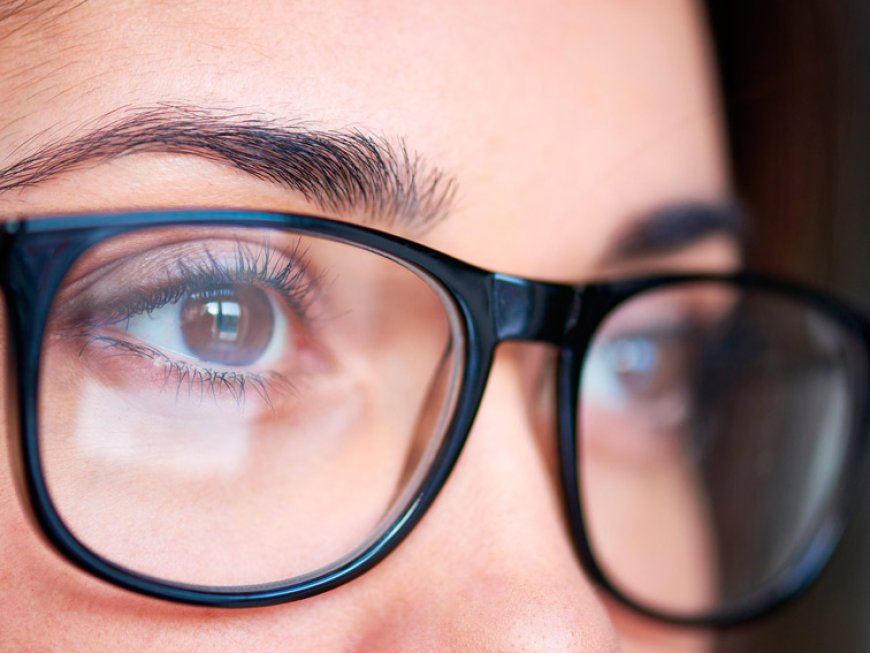5 Simple Ways to Distinguish Between Glasses and Spectacles
Explain the main distinctions between glasses and spectacles. Explore the terms, designs, history, use, and social meanings of these two optical wear.
The realm of glasses can appear intricate and bewildering, especially when it comes to understanding the vocabulary. Two words that often confuse people are 'glasses' and 'spectacles.' Do they simply represent two distinct terms for the identical concept? Or do they have small variations that set them apart? To make things clearer, let's examine five important ways to distinguish between glasses and spectacles.
Grasping the Vocabulary:
Even though people sometimes use the words glasses and spectacles interchangeably, there is a small difference in how they are used depending on where you are. In North America, people usually say 'glasses' while in Britain, 'spectacles' is more commonly used. Both are terms used to describe the frames that hold lenses and are worn in front of the eyes. They are typically used to correct vision.
Nevertheless, the word 'spectacles' originated during the Middle Ages, coming from the Latin term 'spectaculum,' which translates to 'show' or 'watch.' At first, it was used to describe glasses with basic magnifying lenses used to assist scholars in reading. However, eyewear known as 'glasses' gained popularity at a later time, taking inspiration from the glass lenses utilised in these optical instruments.
Creating a visual aesthetic and overall appearance:
Although it can be a topic of debate, some individuals link spectacles to more conventional or timeless styles of eyewear. These commonly come with complete borders around each lens and might include materials such as metal or horn. Actually, glasses can suggest newer styles like semi-rimless or rimless designs, as well as materials like plastic or polycarbonate.
Certainly, this is a broad statement, and both phrases can be used for any type of eyewear design. It's important to mention that the differences in design are more related to cultural meanings rather than exact definitions.
Meaning and Interpretation:
People in general tend to see and use the words glasses and spectacles in distinct ways. Eyewear is often seen as a less formal expression and is commonly used in day-to-day discussions. However, glasses have a somewhat more formal or traditional meaning because of their past usage.
In the world of fashion, companies frequently use the word 'spectacles' to give a retro, timeless, or elegant feel to their items. However, the word 'glasses' is more widely known and is frequently used in less formal or contemporary situations.
How to Use and Why:
Both glasses and spectacles were originally made for people who have trouble seeing, but over time, they have become more versatile due to changes in fashion and advancements in technology. Eyeglasses now come in many different types, such as sunglasses, protective glasses, and glasses for using computers or playing games.
Glasses, which include various types of eyewear, are commonly linked to prescription eyewear. The phrase usually refers to eyewear that is made for helping with vision, reading, or specific activities such as intricate work or art.
Feeling at ease and individual liking:
Ultimately, deciding between glasses and spectacles typically comes down to individual comfort and personal preference. Certain individuals might have a preference for the term 'spectacles,' as they believe it imparts a sense of elegance or distinctiveness to their glasses. Some people may prefer 'glasses' because it is straightforward and widely recognised.
Moreover, feeling at ease is an important aspect. The visual features commonly linked with each word - complete frames for spectacles and contemporary designs for glasses - can greatly affect how comfortable and well-fitting the eyewear is. People might prefer one option over the other because of their personal preferences and the design elements that suit them the most.
Investigating the Development of Glasses
Exploring further into the past of eyewear, we can find that spectacles originated in Italy during the 13th century. They were initially made to help monks and scholars with their reading, since there was no technology to correct vision problems. The first designs were similar to the glasses we use now - basic eyeglasses held up to the eyes or balanced on the nose, usually made with glass lenses in thick frames.
On the other hand, the word 'glasses' became more widely used during the 17th century, indicating the change from using lenses made of quartz to those made of glass. Throughout history, eyewear has changed in shape and purpose, adjusting to the shifting demands of society and popular styles. Today, eyeglasses serve not only as tools for those with vision difficulties but also as a way to express one's personal style and individuality.
Advancements in technology and their consequences
Advancements in technology have also had a big impact on the differences between these two terms. Glasses, with their historical meaning, are often linked to regular tools for improving vision. Nevertheless, the increase in popularity of eyewear includes a wider variety of items. This includes glasses with advanced features, virtual reality glasses for immersive experiences, or sunglasses with protection against harmful UV rays. It's fascinating to observe how technology has impacted the meanings of these two words throughout history.
Influence of Popular Culture
Popular culture has also influenced the way people think about glasses and spectacles. Famous figures such as Harry Potter, who wears circular glasses, have strengthened the timeless, customary meaning linked to the word. At the same time, the word 'glasses' is commonly used in current conversations and media, highlighting its modern and informal usage. Famous people and social media personalities wearing stylish glasses have made them even more popular as a fashionable accessory.
Deciding What's Best
When deciding between glasses and spectacles, aside from the names, think about things like why you need them, how comfortable they are, and what style you prefer. Are you interested in eyewear for vision correction or are you more focused on expressing your personal style? Do you like a traditional, old-fashioned appearance or a contemporary, bold fashion? In the end, it's about what is most effective for you.
Conclusion
Basically, glasses and spectacles are alike but have distinct differences influenced by past events, societal norms, advancements in technology, and individual choices. Even though people often use these words interchangeably, recognising these small distinctions can bring an extra dimension to your discussions and decisions regarding glasses. However, keep in mind that whether you choose glasses or spectacles, the most crucial aspect is that they meet your requirements, offer comfort, and possibly enhance your fashion sense.
It's amazing how eyewear can come in so many different styles and be called by various names. So, the next time you grab your eyewear, you'll understand the long history and various meanings that these basic but necessary accessories hold.

 Trendupdaily
Trendupdaily 







